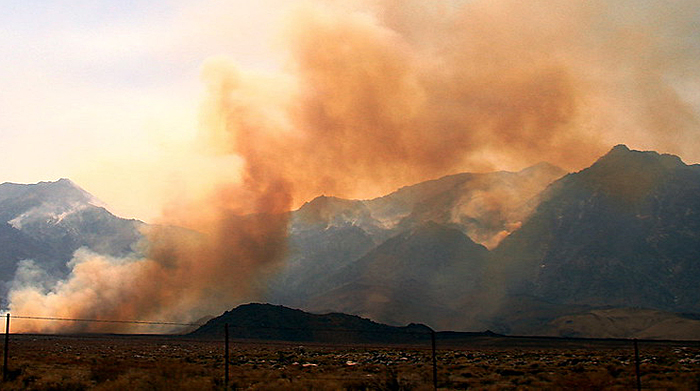How Electric Co-Ops are Hardening Systems Against Wildfires

Image courtesy of desert-dweller under Attribution-NonCommercial 2.0 Generic License, resized to 700 x 391 pixels.
Electric co-ops – or cooperatives – often serve communities that are at risk of wildfires, which means that taking steps to mitigate this risk is extremely worthwhile. What follows are some examples of how co-ops are addressing this risk.
Ways Electric Co-Ops are Hardening Their Systems for Wildfire Mitigation
Electric co-ops have really stepped up their infrastructure hardening and risk-mitigation tactics over the past decade. Tactics include fortifying relationships with local fire response agencies, improving member outreach to provide more of an early warning, encouraging members to take proactive steps to reduce their own fire-risk footprint, and ramping up equipment-maintenance and vegetation management plans and protocols.
For example, the Kootenai Electric Cooperative (KEC), located in the Pacific Northwest which has been a hotbed of fire activity in recent years, has been fortifying its system for the past 4 years. The co-op solidified its hardening plan after analyzing safety metrics, population density, evacuation routes, weather history, forest health, and similar data points.
Kootenai’s wildfire mitigation tactics have increased in importance in recent years due to an increase in drought frequency and duration, as well as tree disease, across its service territory. As such, the electric co-op has updated its vegetation management plan, obtained funding to underground 50 miles of power lines, and increased wildfire-mitigation training for employees.
Another example is the Oregon Trail Electric Cooperative (OTEC). Oregon Trail regularly meets with community partners to review response processes and metrics and gain alignment on response plans, conducts far-reaching exercises and drills, conducts frequent member-outreach events, and regulates components within their infrastructure in response to “red flag” warnings.
The bottom line is that the electric co-ops cited definitely have the right idea on this. The most proactive ones have taken to analyzing their needs and vulnerabilities and developing and implementing plans and protocols designed to maximize restoration effectiveness. Dare I say, there’s some large utilities out there that could learn a thing or two from these and other proactive electric co-ops.



